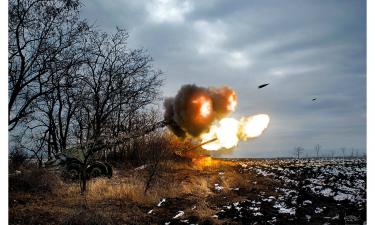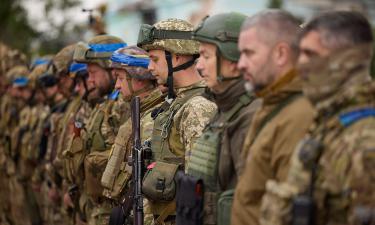Russia's First High Speed Trains Designed for Fans of Extreme Riding Only
Russia’s new highly advertised bullet trains known as Sapsan are not safe for traveling. A serious technical defect was reportedly found in the new trains only one month after their official launch. Russian Railways giant currently studies an opportunity to purchase AGV trains from France and build a separate railway line between Moscow and St. Petersburg.
The Sapsan project, designed by Siemens, had a bitter start. Andreas Lipp, the chief designer of the train, said in December of 2009 that his specialists had to work on many little things every day.
“The doors, which were mounted during the summer period, do not open well now because of the winter cold in Russia,” he said.
The details about technical defense of Sapsan trains became a subject for the meeting between Prime Minister Putin and the chairman of RZD (Russian Railways) Vladimir Yakunin. The latter assured Putin that the high speed trains were operating properly and there were not any problems about them, as Russian news agencies reported.
Two days later, Dietrich Moeller, the president of Siemens Russia, stated at a news conference that the Russian media was right.
“We found increased wear on the wheel surface of the trains in the beginning of 2010. We are carefully investigating the phenomenon,” the official said.
RZD signed a deal to buy eight Sapsan high-speed trains from Siemens in 2006, followed by a 30-year maintenance contract in April 2007. The German engineering giant sold another train and a production license to China shortly afterwards.
China paid seven times less for the train than Russia paid Siemens for Sapsan. Moreover, the Chinese train can run 144 km/h faster.
A research institute of RZD analyzed a wheelpair of Sapsan at the end of January. Experts were shocked to find six-millimeter deep grooves on the wheels. Multiple cracks were found everywhere on the wheel surface. Such a terrible defect was discovered only one month after the official launch of the project.
Andrey Yagovkin, a senior official with RZD, told reporters that specialists of a number of Russian scientific organizations conducted a detailed analysis of the defect.
Sapsan wheels require an additional development, the official added. “A new wheel profile will be tested in February of 2010. The new profile will be used for all Sapsan trains in Russia in case the tests are successful,” he said.
The St. Petersburg – Moscow railway line was built with the use of Japanese railway tracks. However, the origin of the tracks has nothing to do with the problem: many other trains run on the same line, but there were no defects found with them.
Russian Railways currently studies an opportunity to purchase 20 high-speed AGV trains from France’s Alstom. The monopoly also considers an opportunity to build a separate line for high-speed trains between the two Russian capitals, RZD’s vice president Valentin Gapanovich said.
It is worthy of note that Russia signed contracts with Siemens to purchase 54 Desiro commuter trains for Winter Olympics 2014 in Sochi. RZD also plans to purchase two more Sapsan trains from the German company before July 2010.
The train made its first commercial run between Russia's two largest cities in a record time of 3 hours and 45 minutes on December 18 but developed a number of problems, including faulty automatic doors, since then. On Monday, the train arrived in St. Petersburg with a 42-minute delay because two capacitors in a second carriage malfunctioned on the way.
"Our contract stipulates penalties for technical problems caused by the manufacturer's fault, and we will certainly impose such penalties without going to court," RIA Novosti Quoted Vladimir Yakunin said at a news briefing on Wednesday.
Sapsan, Russia's first train capable of travelling at a speed of 250 kilometers per hour (155 mph), has 10 cars, of which two are first class and eight are second class, and can carry 604 passengers.
At present, two Sapsan trains make three runs between Moscow and St. Petersburg daily.
It takes approximately eight hours for most Russian trains to cover 650 km (about 400 miles) that separate Moscow from Saint Petersburg. Nevsky Express, which had been considered Russia's fastest train, is able to cover the distance in 4 hours and 30 minutes.
Vitaly Salnik.
Subscribe to Pravda.Ru Telegram channel, Facebook, RSS!




